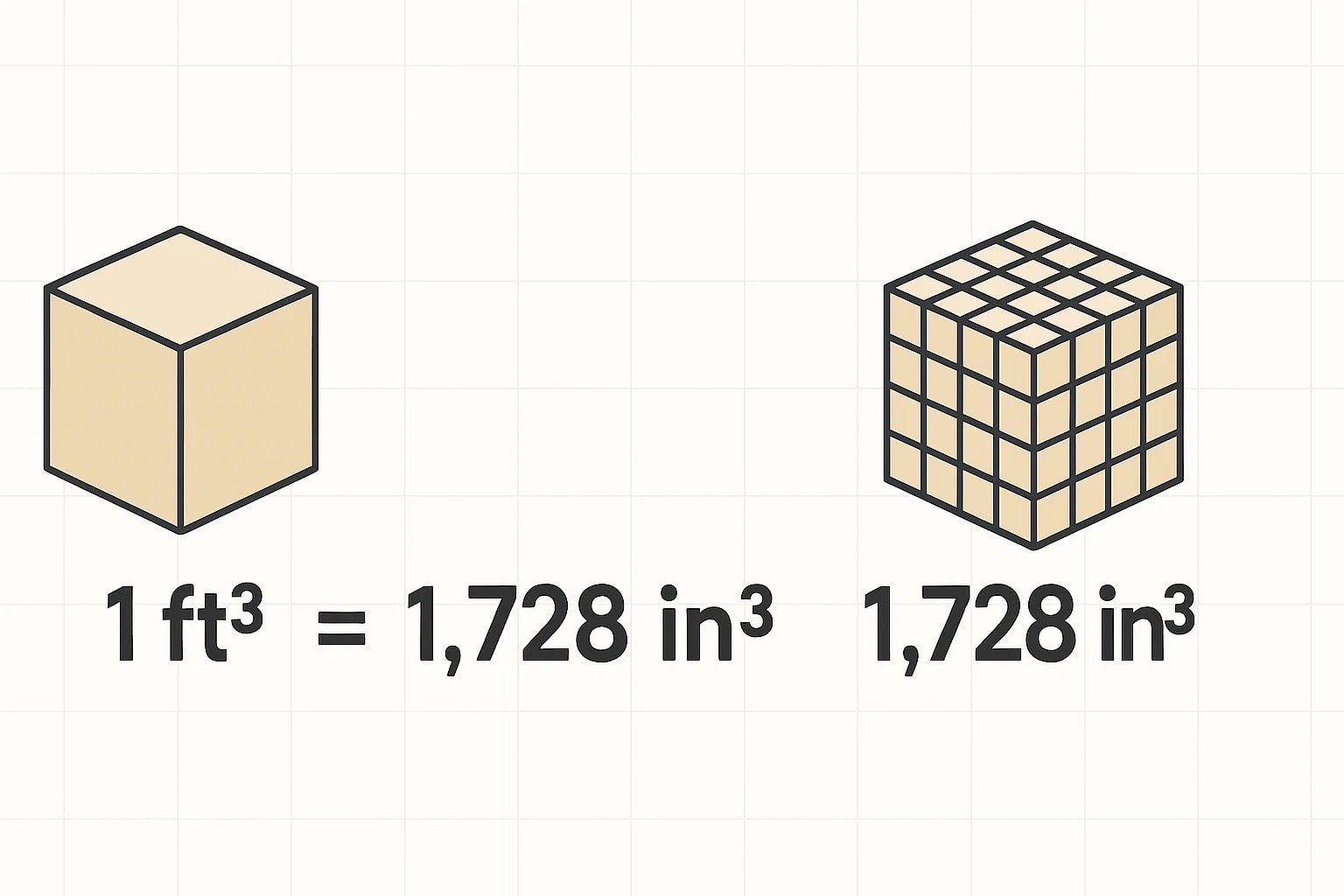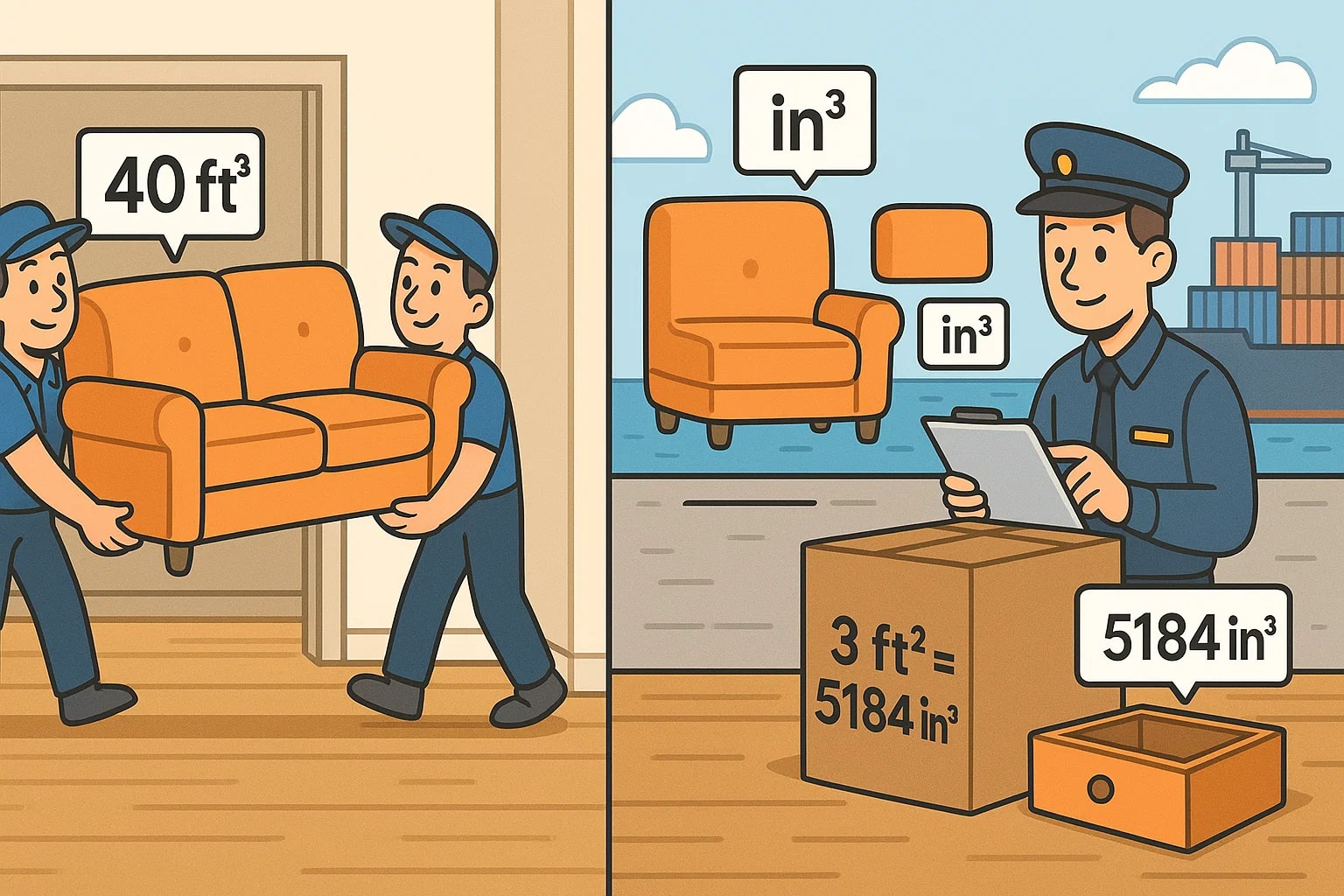cubic foot to cubic inch – How to convert ft³ to in³
The conversion from cubic feet to cubic inches is one of the most useful within the imperial system. Cubic feet are common for large volumes like furniture and rooms, while cubic inches are better suited for smaller products and precision design. Switching between them ensures accuracy in shipping, manufacturing, and construction.
What is a cubic foot (ft³)?
A cubic foot is the volume of a cube with each side measuring 1 foot. It is widely used in the United States for home dimensions, HVAC systems, and storage.
What is a cubic inch (in³)?
A cubic inch is the volume of a cube with each side of 1 inch. It is commonly used in engineering, automotive engines, and product specifications. For instance, a 350 in³ V8 engine is a classic measurement in American cars.
Conversion formula – cubic foot to cubic inch
The relationship between them is exact:
1 ft³ = 1728 in³
To convert cubic feet to cubic inches:1 cubic foot = cubic inch × 1728
To convert cubic inches to cubic feet:1 cubic inch = cubic foot ÷ 1728
Examples:
-
2 ft³ = 3456 in³ -
8640 in³ = 5 ft³

For anyone who needs fast conversions beyond ft³ and in³, the Volume Converter and other smart Conversion Tools on Jetcalculator make the process quick and reliable.
Do you know?
-
In carpentry: Woodworkers often measure small components in cubic inches, even though larger furniture is planned in cubic feet.
-
In shipping: Freight companies may calculate container space in cubic feet, while product packaging is listed in cubic inches for precision.
-
In pop culture: American car advertisements in the 1960s proudly promoted engines in cubic inches, while today they are usually shown in liters.
How furniture moves between feet and inches
In furniture design, the two units often work side by side. A sofa might take up 40 ft³ of space, but its individual parts, such as cushions or drawers, may be measured in in³ for production details.
The same applies in shipping. A large box might be listed at 3 ft³, but customs declarations sometimes require the measurement in in³ — in this case, 5184 in³. Accurate conversions prevent errors and keep international logistics flowing smoothly.

Scaling down the big picture
The formula 1 ft³ = 1728 in³ is a reminder of how measurement adapts to scale. Cubic feet help us understand room sizes and storage, while cubic inches let us focus on the fine details of objects inside those spaces.
By moving confidently between the two, you gain flexibility whether you’re designing furniture, shipping goods, or comparing engine sizes. It’s the link that ensures big and small volumes always match perfectly.

